
Guests
- Paul FarmerU.N. Deputy Special Envoy for Haiti, under Special Envoy Bill Clinton. His new book, Haiti After the Earthquake, has just been published. Dr. Farmer is a medical anthropologist and physician. He is Kolokotrones University Professor at Harvard University and chair of the Department of Global Health and Social Medicine at Harvard Medical School. He is also founding director of Partners in Health.
Eighteen months ago this week, Haiti was devastated by an earthquake that killed as many as 300,000 people, injured hundreds of thousands, and left more than one million homeless. At the time of the earthquake, Haiti was already the poorest nation in the Western hemisphere, and now it is still struggling to recover. We spend the hour with Dr. Paul Farmer, who has been working in Haiti for nearly three decades, and since 2009 has served as the U.N. deputy special envoy for Haiti working under former President Bill Clinton. More than 20 years ago, Dr. Farmer helped found the charity Partners in Health to provide free medical care in central Haiti, and now provides aid to nine additional countries around the world. He is the author of several books on Haiti and just published a new book titled “Haiti After the Earthquake.” [includes rush transcript]
Transcript
AMY GOODMAN: Eighteen months ago this week, Haiti was devastated by a large earthquake that killed, well, perhaps as many as 300,000 people. Hundreds of thousands were injured. Over a million Haitians were left homeless. The earthquake destroyed over 200,000 homes as well as most government buildings, including Haiti’s National Palace.
At the time of the earthquake, Haiti was already the poorest nation in the Western hemisphere. Eighteen months later, Haiti is still trying to recover. Tons of rubble remain in the streets. Hundreds of thousands of people live in makeshift camps. And the international community continues to grapple with how to deal with one of the worst catastrophes to ever hit a densely populated region.
Today we spend the hour with Dr. Paul Farmer. He’s been working in Haiti for nearly three decades. In 2009, prior to the earthquake, he was appointed as the U.N. deputy special envoy for Haiti working under former President Bill Clinton.
More than 20 years ago, Dr. Farmer helped found the charity Partners in Health to provide free medical care in central Haiti. Today, Partners in Health provides healthcare for people with HIV/AIDS, tuberculosis, malaria and other conditions in Haiti, as well as more than eight other countries around the world, including Peru, Russia, Rwanda, Lesotho, Malawi, Mexico and Guatemala.
Farmer’s work in Haiti was chronicled by the author Tracy Kidder in the book Mountains Beyond Mountains: The Quest of Dr. Paul Farmer, a Man Who Would Cure the World. Paul Farmer is also chair of the Department of Global Health and Social Medicine at Harvard Medical School. He just published a new book called Haiti After the Earthquake.
Dr. Paul Farmer, welcome back to Democracy Now!
DR. PAUL FARMER: Thank you. Good to be back, Amy.
AMY GOODMAN: Well, it is 18 months later. Describe Haiti to us today.
DR. PAUL FARMER: Well, I think, for some people, were you to—and I know you’ve been there not too long ago—you go there, and you say, “Wow, it looks like an earthquake just happened here,” as opposed to 18 months ago. But actually, it doesn’t look the same as it did in January of 2010. There has been some progress, very slow progress, in clearing rubble away and very slow progress in getting people into decent shelter. So, you know, it looks like a mess, and it is a mess. I guess one of the questions that I was trying to raise in this book is, how can we do better at cleaning up this mess or help the Haitians do a better job at cleaning up the mess? And I think we’ve got a long way to go.
AMY GOODMAN: What do you think? What do you think has to happen right now?
DR. PAUL FARMER: Well, one thing is, you know, we need to focus more on creation of decent jobs for Haitians. I think that would ease a lot of the pain there. That’s what people want, to be able to have work, and again, work with decent labor conditions, with dignity. And more of the resources that are being committed to Haiti need to be committed to job creation. We’re doing some projects, for example, in healthcare infrastructure. And one of the purposes, mainly, is to create jobs. Another is, really things have to move more quickly. There’s so much frustration there, as you might imagine, especially among people living in—under tarps and in tents.
AMY GOODMAN: Can you give us a brief history of Haiti? Today, you talk about the situation with the earthquake being acute on chronic. Give us a thumbnail sketch. You’ve written a number of books about Haiti. You have lived in Haiti. You have lived Haiti for so many decades. Tell people who aren’t aware of its history.
DR. PAUL FARMER: Well, I think the real template of Haiti is the slave colony that made Haiti, by the close of the 18th century, the largest producer of tropical produce in the world. So, at the eve of—it was a French colony then and was producing more sugar and tropical produce than all of the other New World colonies combined, and more than the American colonies that had just—that were just becoming at that time the United States. So that’s the template. And the numbers were stacked in favor of the slaves, in the sense that there were so many people in chains compared to the people who owned them or ran the plantations. And so, there were—all throughout the 18th century, there were slave revolts, of course, as there were elsewhere in the New World and in South America, elsewhere in the Caribbean.
But in Haiti, that slave revolt, the mother of all slave revolts, that started in 1791, actually led to a war of independence. And in 1803, in November, Haiti—the Haitians declared themselves an independent nation. And their National Independence Day is celebrated on January 1st, 1804. And so, that really meant that they were living as a new nation in the middle of a very hostile environment right next—between a number of slave colonies and to the south of the only other independent nation in the world, the United States, which—you know, half of which was a slave-owning—was a place where slavery was practiced. So it was a very—the 19th century was largely one in which the Haitians defined themselves in contrast to the rest of the hemisphere and, of course, their former masters in Europe. And that really set the stage for everything that was to follow. Of course, you could make that claim about any country’s history, but in Haiti it’s particularly vivid how much that determined their fate in the rest of the 19th century and the 20th century.
AMY GOODMAN: And the French debt, when did that begin, the reparations this impoverished country had to pay?
DR. PAUL FARMER: It’s a nutty story to the modern observer, that the French would successfully push the Haitians in 1825 to pay for their own freedom—150 million germinal francs. I had no idea what a germinal franc was, but it’s a lot of money. As you know from your reporting some—just a few years ago, that the value of that was estimated at $20 billion in modern currency. And the Haitians started to pay it. From 1825 well into the 20th century, there were transfers of Haitian money to France. And that went on probably until the mid-20th century.
AMY GOODMAN: And the U.S. recognizing Haiti? I mean, established in 1804, how long did it take the U.S.?
DR. PAUL FARMER: It was Lincoln, President Lincoln, who first recognized that Haiti even existed. From 1804 until the American Civil War, statesmen from the Southern states said, “We can’t recognize Haiti. I mean, our safety and security depends on not recognizing Haiti.” Again, this seems very distant to a 20th century observer, but not so much to the Haitians themselves. They’re living and walking in history and are very aware of their own past.
AMY GOODMAN: We got a Facebook question sent to us by Lief Eric Malone, who asks, quote, “What is the progress of reparations being paid to Haiti from France? Does the population still support this as it did under Aristide?”
DR. PAUL FARMER: The population of Haiti? Oh, sure. I’m sure that the population of Haiti does support reparations from France. Now, I can’t speak for the—I mean, I shouldn’t speak—obviously, I can’t speak for any Haitians, but having lived and worked in rural Haiti, I know that there’s broad popular support for some idea that it’s not Haiti that owes the world, it’s the rest of the world, and particularly France, that owes Haiti. The Haitian elite has always been uncomfortable with this since the 19th century, because they understood that their survival depended on selling the very same things that they sold as a colony. That is, sugar, coffee, cotton, tropical produce. And so, they’ve always been very uncomfortable about this, and probably are to this day. I haven’t, you know, assayed their opinions.
AMY GOODMAN: Haiti was a major sugar exporter?
DR. PAUL FARMER: The largest one in the world.
AMY GOODMAN: Now?
DR. PAUL FARMER: Now it’s not. Now it’s probably not even in the top 20. You know, that industry, like a lot of—that required—I guess “agribusiness” is not a good term for plantation slavery, but it required a very different mode of production than occurred in Haiti after the war of independence. What I mean by that is, Haitians fled plantation-style work and went into the hills, and coffee became a much bigger product, and that could be grown by individual homesteads, by families, so coffee replaced—in the 19th century, replaced sugar. And sugar, again, is really—Haiti is a net importer of sugar now, in part because of U.S. subsidies for American-grown sugar.
AMY GOODMAN: We’re going to break, then come back. Our guest is Dr. Paul Farmer. He is U.N. deputy special envoy for Haiti under President Clinton. He has just written a new book; it’s called Haiti After the Earthquake. This is Democracy Now! Back in a minute.
[break]
AMY GOODMAN: Our guest is Dr. Paul Farmer, U.N. deputy special envoy for Haiti under Bill Clinton. His new book, Haiti After the Earthquake. He’s a university professor at Harvard University, a medical anthropologist and physician, co-founder of Partners in Health, which operates in a number of countries around the world but began in Haiti. Now, I saw Arcade Fire at your 50th birthday, Paul.
DR. PAUL FARMER: It’s pretty cool, huh?
AMY GOODMAN: They are raising money for Partners in Health around the world?
DR. PAUL FARMER: They are. Yes, they are, in fact. For every—in every European concert, a euro went to Partners in Health, and in their American concerts, a dollar. And they’re very active not just raising money through their work, but their—they’ve been terrific spokespeople. Obviously—you mentioned my 50th birthday—they’re a connection to a much younger group of supporters of health and social justice work, particularly Haiti. And we’ve met a lot of people in Canada through Arcade Fire, as well. They’re terrific people.
AMY GOODMAN: Talk about how you founded Partners in Health. And even give us a brief history of your own life. Tracy Kidder, of course, talks about it in this remarkable book. Talk about how you came to do what you do. You didn’t exactly grow up in a traditional, conventional way.
DR. PAUL FARMER: I didn’t. I see you’re going to push me back into my childhood. I was—I came from a large family, and we lived—I lived mostly in Florida. I think you’re probably referring to the fact that for about 10 years prior to going to Haiti, I lived with my brothers and sisters and my parents in a bus that had been—Tracy Kidder made a big deal of this—that had been a tuberculosis bus. Now, of course, that had nothing to do with the fact that I became a tuberculosis specialist, I don’t believe, but it is kind of funny looking back. These were these buses that moved around American cities to do what’s called active case finding. It takes X-rays of people. And my father figured, well, there’s eight of us. He was a schoolteacher. If we—maybe if we bought this bus, we could go on vacation together. And so, we ended up living in it. He was a pretty interesting guy.
I had heard about Haiti, growing up in Florida. And then I went to college and started studying about Haiti in a class and then thought maybe I’d like to go there. And I knew I wanted to be a doctor. And so, after college—I do tell students, though, that there’s so much serendipity in this. You can never plan these sort of things out, have to be open to experience. I also thought I wanted to go to Africa, and it would be many years before I did go there to work as a physician. But Haiti, I went to right after college, and I ended up in central Haiti in a squatter settlement. And I didn’t even know it was a squatter settlement, but it was created by a hydroelectric dam that had flooded this valley. So I learned about development work from disgruntled Haitians. And that was, in fact, probably a good way to learn about development work. I learned a lot about health and social justice—that is, the right to healthcare and why that was such an important concept for people living in poverty, especially people who, like many of those I lived with, felt wronged by immediate and remote history. So, Haiti has really been my greatest teacher. I went to medical school after my first year in Haiti.
AMY GOODMAN: And then Partners in Health?
DR. PAUL FARMER: Partners in Health was—thank you. Partners in Health was born, for me and for some of the people I met, in 1983 out of this desire to be able to provide medical care for people living in great poverty. And I would add that of the people who started that organization almost 30 years ago, everyone is still—who is still alive, is still working on this project—the Haitians. Ophelia Dahl, who I met that year, she’s the director of Partners in Health. And we’re still together.
AMY GOODMAN: And the model of Partners in Health?
DR. PAUL FARMER: The model was community-based care, and is community-based care. One thing that bothers me now is the idea that community-based care means that we don’t need excellent hospitals. It doesn’t mean that at all. It means that you’re going to reach all the way from people’s homes to so-called tertiary high-tech medical centers. And that’s what we started building from the ground up in Haiti in 1983. That required building clinics and hospitals but also training community health workers. And that’s really what we’re doing in Africa, as well.
AMY GOODMAN: Can you talk about cholera? You have Haiti hit by this horrendous earthquake, and then you have the cholera epidemic. Talk about how cholera came to Haiti.
DR. PAUL FARMER: Well, I think cholera is a marker of how work like Partners in Health work is not enough, because I don’t know how we could work any harder. We’ve, as I said, built hospitals and clinics and trained thousands of community health workers, but that’s not the same thing as building municipal water supplies and having a strong public sector that is able to provide these basic services.
So cholera was really a disaster waiting to happen for many, many years. As you—I was on your show, I think, some years ago talking about the embargo of development assistance to Haiti, which was never a declared embargo. To me, it was the 34th time the Western world, in whatever incarnation, had blocked assistance to Haiti. That’s by the Haitian accounting. But why I brought that up then was that I knew—and we all knew, those of us working with Partners in Health and its sister organization, which is called Zanmi Lasante, which means Partners in Health in Creole—we knew that we were not able to replace a public water system, and we wanted to see those things built, just like we wanted to see public roads and public education. And so, when assistance like that was blocked to Haiti, we said, if you—if we—you know, these are institutions, they’re development banks, multilateral organizations and certain countries that were unhappy with Haiti’s political choices. If we keep blocking assistance on issues like water, primary education, primary health, we’re going to see outbreaks of waterborne disease and see epidemics of diseases like cholera. So, there’s nothing really scientific about predicting this. And then cholera, as you know, is the constant companion of war and natural disaster and displacement. So we were really living in fear that cholera was going to come along for many years.
AMY GOODMAN: Now, you were one of the first people—you were quoted by AP—saying that the cholera after the earthquake was brought in by the Nepali—the Nepalese peacekeeping force, the U.N. force. How did that happen?
DR. PAUL FARMER: How did it happen that I was rash enough to say that?
AMY GOODMAN: No, how did it happen that they did it?
DR. PAUL FARMER: Well, of course, it was completely unwitting. I mean, no one—no one ever intends to bring a disease into a population that had been free of it. And I really, in a way, wish I hadn’t even gotten involved in the discussion, in a way. I thought it was important at the outset of the epidemic to figure out where the strain came from and to do some basic investigation of, you know, the genotype of the strain. And not to get into too much jargon, but how do we know what antibiotics, for example, would be useful in treating it? You really need to do basic study of the organism. Plus, at that point in late October of last year, it was still conceivable, at least, that you could limit cholera to a certain place and not have it spread across the country like wildfire. So that was the intention back then, not to point fingers at the hapless, you know, peacekeeping troops that unwittingly brought this disease into Haiti. Also, having studied Haitian responses to epidemic diseases in the past, like AIDS, I felt I knew what was coming in terms of what many of the people living in central Haiti would say about this.

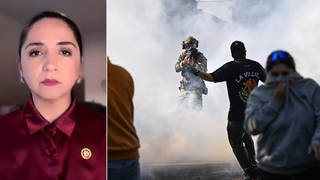
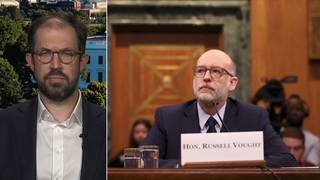
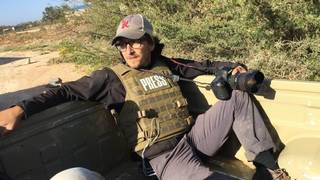
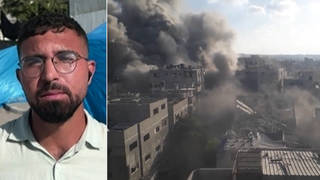





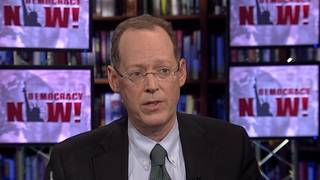
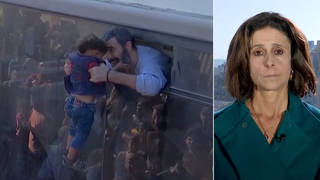
Media Options